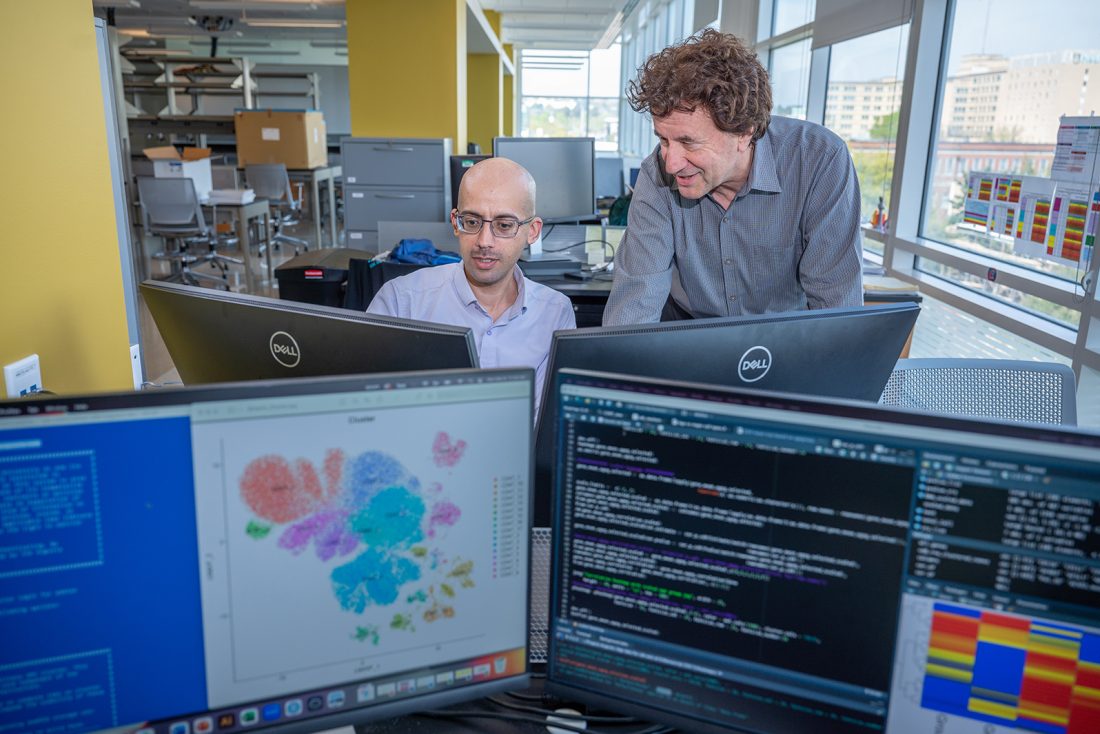How does the immune system recognize what to protect and what to attack?
This question lies at the heart of new research led by Klaus Ley, MD, founding co-director of the Immunology Center of Georgia at Augusta University. The study, recently published in Nature Immunology, sheds light on the delicate balance that keeps the immune system from turning against the body it is meant to protect.
“The immune system is like the moat around a castle, defending against invaders like viruses and bacteria,” said Ley. “But when it attacks the castle itself — your own body — you get severe autoimmune diseases like type 1 diabetes and lupus.”
The research focused on specific molecules, PD-1 and CD73, which act as “brakes” on self-reactive T cells — immune cells that would mistakenly target the body’s own tissues.
By analyzing all of the possible protein fragments that the mouse immune system can recognize and respond to, the team found that the self-reactive T cells were not eliminated by the thymus, the organ that generates all T cells. Instead, they compared the molecules in self-reactive and foreign-reactive T cells and found that blocking PD-1 and CD73 unleashed a robust immune response to self, matching the intensity of the response to foreign invaders like viruses.
This discovery could have major implications for autoimmune diseases and immunotherapy for cancer and heart disease.
“Autoimmune diseases occur when the immune system attacks self,” Ley said. “In cancer immunotherapy, we often aim to stimulate the immune system to attack cancer cells, but this sometimes comes with the tradeoff of triggering autoimmunity.”
The study highlights the potential for fine-tuning immune responses by targeting PD-1 and CD73, potentially opening doors to new treatments. For example, suppressing these molecules could help treat autoimmune diseases by calming overactive immune responses, while blocking them could enhance cancer treatments by boosting the immune attack on tumors.
The research team used computational analysis to evaluate the entire mouse immune peptidome — a staggering 21 million possible peptides, or protein fragments, presented by the immune system.
“This work would have been impossible without advanced computing power,” Ley said. “We analyzed all possible peptides in mice, helping us identify patterns that are relevant to immune responses.”
The findings also challenge traditional theories about how the immune system distinguishes self from foreign. While the thymus — a small organ behind the breastbone — does help eliminate some self-reactive T cells during development, the study showed this is only a minor factor. Instead, molecules like PD-1 and CD73 play a more significant role in regulating these responses.

The study was supported by a research grant from the National Institutes of Health. The first author is Felix Nettersheim, MD, who was a postdoctoral fellow in Ley’s lab at the La Jolla Institute for Immunology, where Ley was a professor and head of the Division of Inflammation Biology before coming to AU’s Medical College of Georgia to found IMMCG in 2022.
“Working on this project as one of Dr. Ley’s mentees has been a great experience, for which I am grateful,” Nettersheim said. “I am excited about the continuation of our research and feel optimistic that our findings might eventually help to establish strategies for prevention of autoimmunity in patients undergoing cancer immunotherapy and beyond.”
Next, the team plans to explore whether these findings hold true in humans and whether the results apply broadly or are specific to certain types of self-antigens. One promising avenue involves studying T cells in plaque from patients with atherosclerosis, a condition linked to heart attacks and strokes.
“This research helps us know what to look for,” Ley said, “making it easier to identify similar mechanisms in human diseases.”
Discoveries at Augusta University are changing and improving the lives of people in Georgia and beyond. Your partnership and support are invaluable as we work to expand our impact.
 Augusta University
Augusta University




